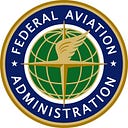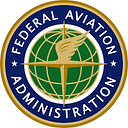Airplane Safety From Parking Lot to Runway: How the FAA Is Adapting to Thousands of Grounded Aircraft during COVID-19
The FAA is closely monitoring the parking of idled jets at airports to make sure they don’t raise safety concerns.
With more than half of its fleet grounded, the U.S. commercial airline industry has been searching for locations to park thousands of its idled jets. More than 100 airports opened their airfields to overflow parking, and the FAA provided guidance to mitigate safety risks around active runways and taxiways.
“When we looked at it through our lenses, we saw possible safety risks,” said John Dermody, director of Airport Safety and Standards. The Office of Airports, along with the Air Traffic Organization and Flight Standards Service closely followed parking operations and coordinated with local airports to ensure parked aircraft do not impede takeoffs and landings or in any way increase safety risks. “We wanted to make sure we had safeguards and mitigations put into place.”
Starting on March 24, Dermody’s office issued a certification alert to airport operators with best practices for parking idled aircraft safely. Among the best practices, the office recommended airports review how parked aircraft might affect airport rescue and firefighting operations, controllers’ line of sight, airport design standards and glare issues, not to mention the possible impact on navigational aids, ILS critical areas, and visual markings. The FAA’s Air Traffic Organization issued a safety assessment checklist to its air traffic managers and the office of Aviation Safety issued a Safety Alert for Operators to air carriers and pilots.
The FAA also encouraged the airlines to park at smaller fields where there are available apron areas and a lower number of air traffic operations. But, Dermody explained, the carriers’ “propensity is to park at large airports where they have maintenance facilities.”
In addition, the FAA dissuaded airlines from parking jets in movement areas, especially runways. Dermody’s office put out the message that “runways need to be absolutely the last resort because of the risk.” The concern was that pilots sometimes misalign with the wrong runway, which would create a much larger safety consequence if there were aircraft parked on the runway.
Dermody turned to the Airport Construction Advisory Council (ACAC) for assistance. The FAA formed the ACAC in 2010 with stakeholder groups to promote safe operations during airport construction, to improve coordination and to share best practices. Among its primary mission is producing airport diagrams that depict runways and taxiways that are under construction.
“John Dermody knew about our construction notice diagrams,” said Ray German, assistant manager for New England Region’s Runway Safety Program and ACAC co-chair. “He asked if we could we do something to give a heightened awareness of where these aircraft are going to be. This is an unusual situation where aircraft are highly concentrated in areas where you wouldn’t expect to see so many planes,” he added.
At the time of Dermody’s request, planes were already being parked in Tulsa and Atlanta, but German and his office got to work right away and produced new airport diagrams in a day’s time.
Now, 116 airports are allowing airlines to park their jets on various areas, including 17 that allow parking on movement areas. This means ACAC and Office of Airports are more busy than usual.
“We worked with our whole field organization, all nine regions,” said Dermody. “It was really the regions working with the airport operators and our office on gathering this information for a daily update.”
Of most concern are when parallel surfaces — such as two runways, or a runway and taxiway — are aligned with each other, because they could confuse a pilot into misaligning with the wrong surface on landing. Pittsburgh International Airport is an example; it was the first to park jets on one runway, with a parallel runway open.
“If you’re unaware of the aircraft being there, it may be a little unnerving to land,” said German.
The FAA is working with the ACAC to improve the construction notice diagrams. For example, the FAA issued an airport certification alert recommending how airport operators should issue notices to airmen (NOTAMS) about closing movement areas to accommodate aircraft parking.
As air travel rebounds and air carriers slowly reactivate their fleets, the agency will shift focus to coordinating with airline maintenance professionals to safely return the aircraft to service. This process involves a more in-depth maintenance and mechanical overview of each aircraft from FAA inspectors, engineers and safety analysts to ensure the parked jets were properly stored and regularly maintained.
Whether we’re looking at runways or the aircraft parked on them, the FAA’s focus is always the same: to mitigate risk from the National Airspace System.
The Federal Aviation Administration is taking proactive steps to help address the widespread health and economic effects that the COVID-19 public health emergency is having on the aviation industry. Learn more about air traffic controllers’ critical work on our website.

